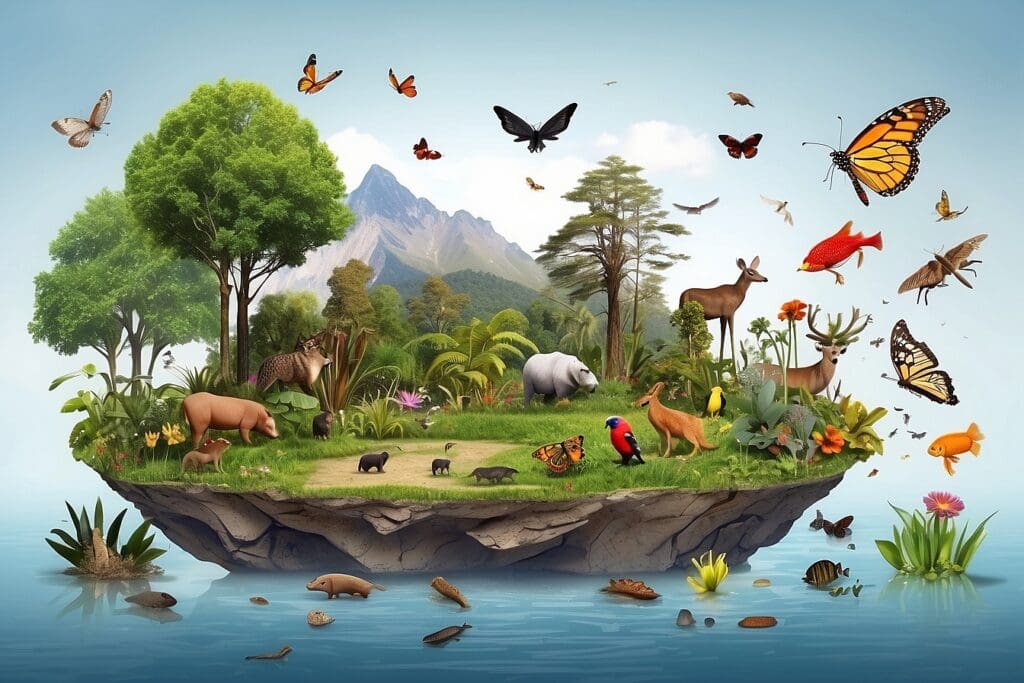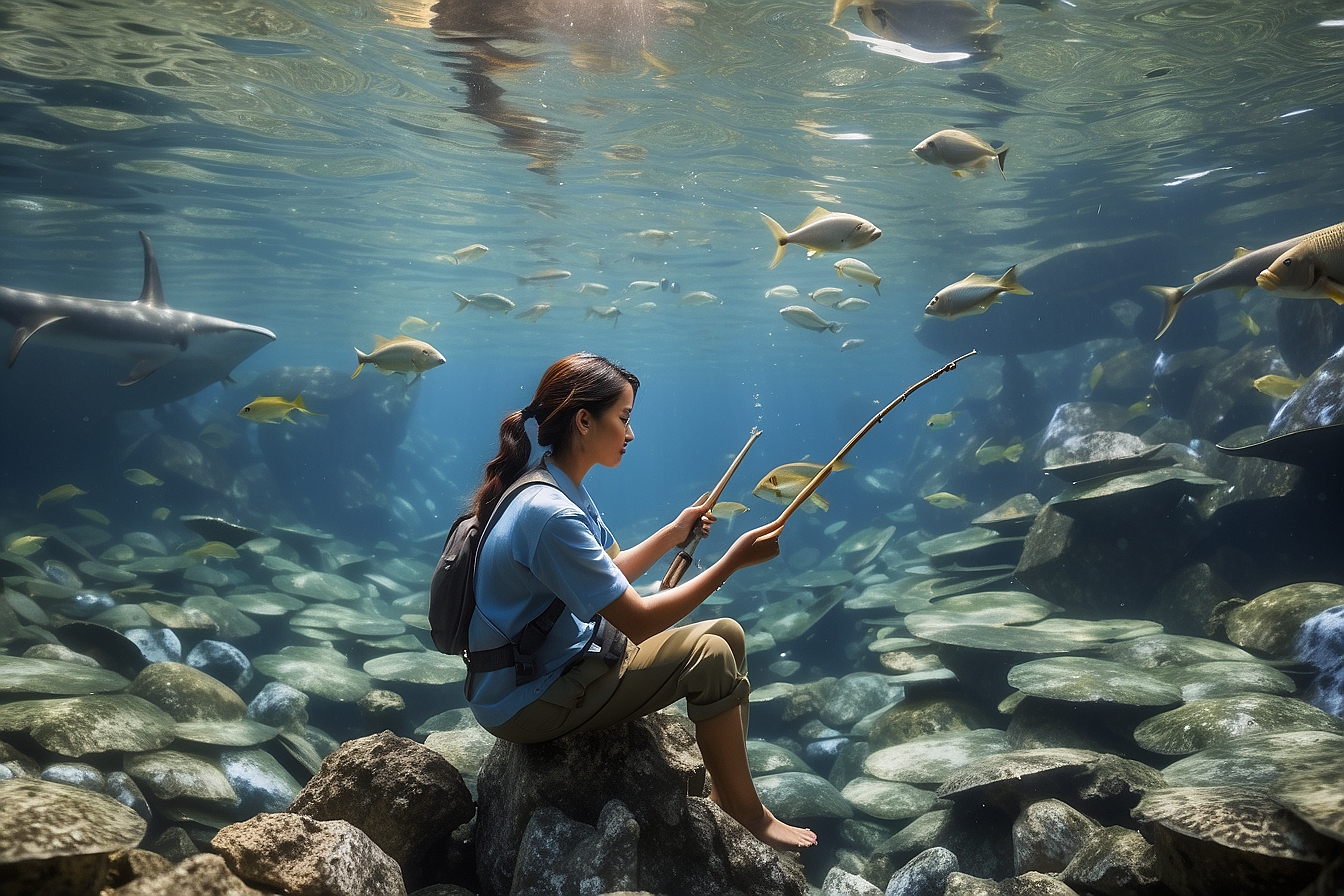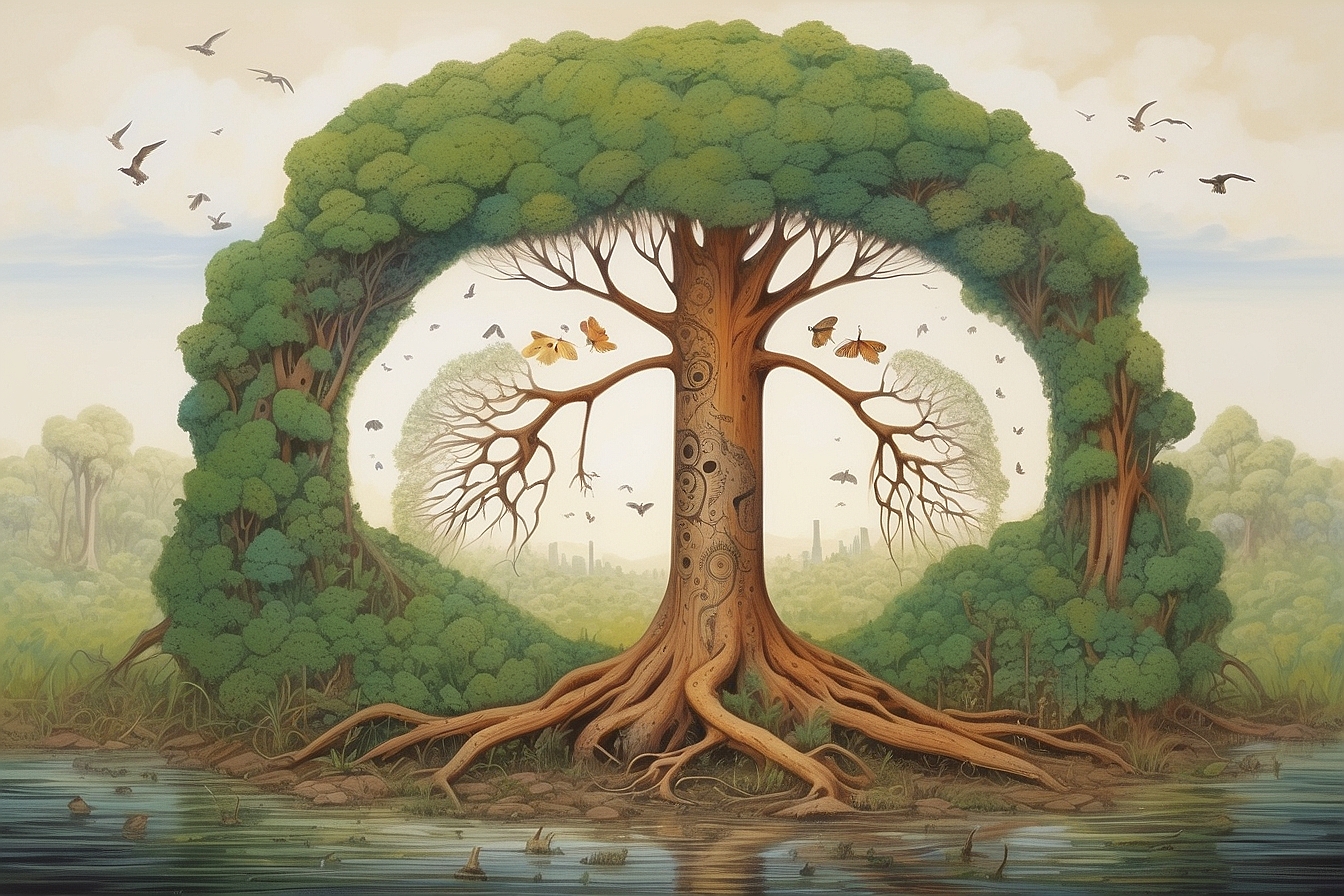Biodiversity can simply be defined as the variation of life at a given site or ecosystem. However, it is through this diversity that natural systems adapt, evolve, and thrive. This link is so strong that the term biodiversity is regarded as synonymous with ecosystem health.1 Diverse ecosystems usually have “increased stability, increased productivity, and resistance to invasion and other disturbances.”2 It is these features that make biodiversity desirable within a given biological community/biome. Most importantly, biodiversity holds enormous value for the entire planet!
How is Biodiversity Defined?
Biodiversity is considered to exist at three levels: genetics, species, and ecosystems.
Genetic diversity: the total number of genetic characteristics in the genetic makeup of a species.3 Genetic diversity allows species to adapt to changing environments. This diversity aims to ensure that some species survive drastic changes and thus carry on desirable genes. The survival of individuals ensures the survival of the population.
Species diversity: a ratio of one species’ population over total number of organisms across all species in the given biome. ‘Zero’ would be infinite diversity, and ‘one’ represents only one species present.
Ecosystem diversity: the diversity of a place at the level of ecosystems.4 The Earth is our ‘biosphere,’ and the variation of ecosystems within our biosphere is a measure of ecosystem diversity.
Biodiversity is measured by two major components: species richness, and species evenness.5 Species richness if similar to species diversity, but it simply measures the total number of species in an ecosystem. The second component is species evenness, which gauges the proportion of species at a given site, e.g. “low evenness indicates that a few species dominate the site.”6
Biodiversity Hotspots
A specific location that has enormous species diversity but is also under threat from human activities is known as a biodiversity hot spot.7 According to Norman Myers, the man who coined the term “hotspot,” two key criteria must be met for an area to be considered a biodiversity hotspot: “it must contain at least 0.5% or 1,500 species of [plants known to only exist in that region (endemic)], and it has to have lost at least 70% of its primary vegetation.”8 At least 25 areas around the world meet these qualifications, and they “support nearly 60% of the world’s plant, bird, mammal, reptile, and amphibian species, with a very high share of endemic species.”9 This gives you a sense of how many unique species are under threat from human impacts around the world.
 10
10
Why is Biodiversity Important?
In 1992, the United Nations (UN) held a Conference on Environment and Development. At this conference, 192 nations plus the European Union came together to create the “Convention on Biological Diversity (CBD).” In 2002, they committed to “significantly reduce biodiversity loss by 2010.”11 To highlight the importance of biodiversity, the following is a quote from the CBD: “At least 40 per cent of the world’s economy and 80 per cent of the needs of the poor are derived from biological resources. In addition, the richer the diversity of life, the greater the opportunity for medical discoveries, economic development, and adaptive responses to such new challenges as climate change.”12 This quote succinctly sums up the value of biodiversity to our economy, our health, and our earth.
Natural Balance in our Ecosystems
Many of us are aware of a natural balance that occurs within nature where some species benefit from others and in turn fuel a vibrant ecosystem. This phenomenon is so powerful that an entire philosophy has arisen from its premise. The “Gaia” philosophy believes that living organisms on a planet will “affect the nature of their environment in order to make the environment more suitable for life.”13 Biodiversity is critical for this to occur since only evolutionarily advantageous traits will remain and continue to support life on Earth. The pattern of life supporting life is so strong that some take the Gaia philosophy to an extreme and hold that the Earth itself is a living, self-regulating, coevolving, organism.14 We view the intricate parts of this vast organism daily, but they work together and evolve together in such a way that they resemble a single entity. There is clearly a “spectrum of Gaia hypotheses, ranging from the undeniable to radical,” but the significance of biodiversity remains.15 Biodiversity promotes a balanced ecosystem, which is one in which living species co-exist for mutual benefit.16

This image illustrates living organisms working together for a common existence; biodiversity promotes the health of this system. 17
Economic Value
When the argument “biodiversity is priceless” is not sufficiently compelling, governments try to put a price tag on biological resources. This is obviously difficult, if not impossible, but the UN and several other nations created an organization that attempted to do just that. The Economics of Ecosystems and Biodiversity (TEEB) is that organization.18 In a 2009 report, the TEEB illustrated the economic value of various biological resources and the benefits of diverse ecosystems:19
| Sector | Size of Market | Comment |
| Pharmaceutical | US$ 640 bn. (2006) | 25-50% derived from genetic resources |
| Biotechnology | US$ 70 bn. (2006) from public companies alone | Many products derived from genetic resources (enzymes, microorganisms) |
| Agricultural seeds | US$ 30 bn. (2006) | All derived from genetic resources |
| Personal care, Botanical and food & Beverage industries | US$ 22 bn. (2006) for herbal supplements US$ 12 bn. (2006) for personal care US$ 31 bn. (2006) for food products | Some products derived from genetic resources. represents ‘natural’ component of the market. |
| The Economics of Ecosystems and Biodiversity for National and International Policy Makers 2009 Table: Example of market sectors dependent on genetic resources | ||
20
As seen from the TEEB report, biological resources are key to the prosperity of enormous economic markets such as agriculture and pharmaceuticals. Moreover, it is difficult to estimate just how much economic loss would result from drastic reductions in global biodiversity, but estimates on the order of trillions of dollars do not seem out of the question. Furthermore, if we take action to preserve biodiversity by reducing climate change simultaneously, resulting in additional economic benefits.
A UN program known as REDD (Reducing Emissions from Deforestation and Forest Degradation) aims to cut greenhouse gases and preserve biodiversity by protecting forests.21 “The proposed REDD instrument … could lead to an estimated halving of deforestation rates by 2030, cutting emissions by 1.5 – 2.7 Gt CO2 per year. The estimated costs range from US $17.2 billion to US $33 billion/year whilst the estimated long-term net benefit of this action in terms of reduced climate change is estimated at US$ 3.7 trillion in present value terms.”22 That is an estimated benefit of $3.2 trillion worth of reduced climate change. With “an estimated 40% of world trade based on biological products or processes,” biodiversity is clearly vital to economic growth.23 While trees and biodiversity may be priceless, it is apparent that they can also be worth a great deal of money.
Biodiversity Loss
Biodiversity has continued to fall in recent years, and this is due in most part to: “habitat loss and degradation, climate change, excessive nutrient load and other forms of pollution, over-exploitation and unsustainable use, and species extinction . Humans have had an undeniable effect upon the extinction of species. In the 20th century, the extinction rate of species worldwide was 1000 times larger than the average rate during preceding 65 million years; this may climb to 10,000 times the background rate during the next century.25 Perhaps even more shocking is a look at what overharvesting can do to a population. 90 percent of big ocean fish have been harvested in the last half century because of industrial fishing practices starting in the 1950s.26
With the shifting climate and increased ecosystem stress, many scientists warn of mass extinctions in our lifetime. The largest study of its kind claims that “15 to 37 percent of living species” will be extinct by mid-century, the median value (24%) is equivalent to 1.25 million species.27 The study says ocean coral reefs . As ice continues to melt, “the prospect of ice-free summers in the Arctic Ocean implies the loss of an entire biome.”29
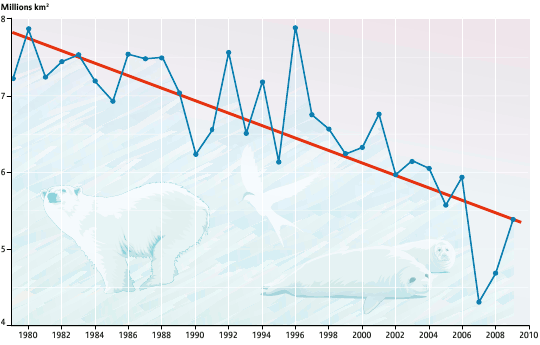
The extent of floating sea ice in the Arctic Ocean, as measured at its annual minimum in September 2009, shows a steady decline between 1980 and 2009.Source: National Snow and Ice Data Center, graph compiled by Secretariat of the Convention on Biological Diversity (2010) Global Biodiversity Outlook 3, May 2010. 30
Furthermore, increased carbon dioxide in the atmosphere equals increased carbon dioxide in the ocean, which causes acidification . Increased ocean acidification means loss of marine life and biodiversity. The excess CO2 degrades the shells of ocean species leading to their death and affecting the entire food web as a result.31 One of the most critical organisms affected by acidification is coral. “Coral reefs harbor more than 25 percent of all known fish and provide our oceans with the highest biodiversity of any marine ecosystem.”32 Unfortunately, “[w]arm-water coral cover has been reduced by 30 percent or higher since the beginning of the 1980s” and their numbers will continue to decline if the climate continues to warm.33
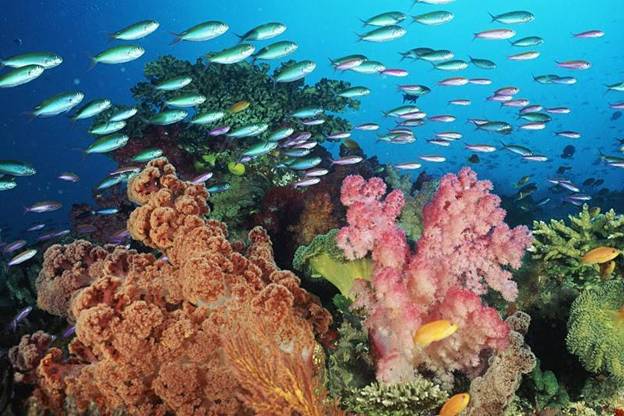
A healthy coral reef.
Where do we go from here?
Natural variation is responsible for the vibrant and complex natural environment that we call Earth. Without biodiversity, a single plague or extreme weather event could wipe out entire populations within a biome. Shifting climate regimes can place equivalent stress on species. With increased biodiversity, comes an increased likelihood that a portion of the species will survive, adapt, and repopulate. However, with mass extinctions caused by habitat destruction, pollution, invasive species, and climate change, natural variation is threatened. Biodiversity is yet another reason why human society needs to reassess its current modus operandi, or risk the irreversible destruction of millions of species—the full impact of which we may never know. The good news is that there are conservation efforts underway, and there is hope for species conservation and reintroduction, we just have to start making it a top priority on a global scale.

